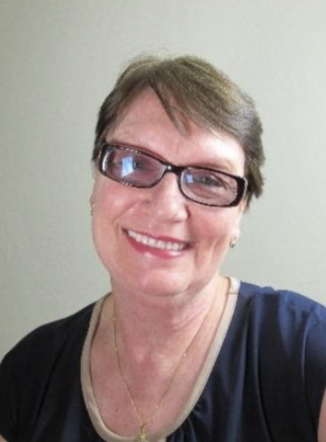Our Autism Journey From Special Education to Mainstream Classrooms
According to the Individuals with Disabilities Education Act (IDEA), every child with special needs has the right to be educated in the least restrictive environment (LRE), which is the general education classroom as a first option. Working toward a more restrictive environment is only acceptable if needs come up that cannot be met with support and modifications in the mainstream classroom.
A Fight for Inclusion
In my book, Autism on a Shoestring Budget, I tell the story of trying to gain access for my autistic grandson to elementary general education classes as early as kindergarten. He started in a regular preschool class at age 4, but from thereon it became an ever-increasing battle for him to be placed and learn in an inclusive classroom setting.
The reasons were understandable. Because of underfunding and huge class sizes, teachers were serving too many students to the point that adding one with special needs nearly broke the camel’s back. That, and many teachers’ lack of training in autism and being at a loss as to how to provide ample support and handle “behaviors” almost always made it necessary, to my dismay, for him to be placed in self-contained special education classrooms.
To be fair, through the years, some of my grandson’s behaviors were very challenging and included bolting, hyperactivity, excessive focus on special interests, meltdowns, and at different times, aggression. Behavior is communication, and there were reasons why the behavioral challenges were more severe at different times, such as frequent moves, changes in family dynamics, and the side effects of starting and stopping medications, to mention just a few.
This did not keep me, however, from working to ready him and advocating for his right to learn in the least restrictive environment whenever and by whatever means I could. I am happy to say that these efforts paid off and I am so proud to see my now 16-year-old grandson, who was still taught in a self-contained classroom on a special education campus just two years ago, successfully spend 88% of his day—soon to be increased to 100 %—on a comprehensive school site today!
Here's how we got there…
The Freshman Year
On August 1, 2020, during the worst of the COVID-19 pandemic, my grandson moved back in with me to provide him with more one-on-one attention before starting his first year of high school remotely. We developed a special bond during the first 6 years of his life that I raised him, so he was very happy to live with me again and excitedly exclaimed that his “sleepovers” would now be permanent.
The first few months, however, were extremely rough. Weaning him off his medications (which did not seem to be helping him) to bring him back to baseline resulted in a difficult withdrawal as predicted by his physician. The frequent aggressive outbursts were extensive and severe. Thankfully, as the drugs cleared out of his system, he gradually improved and calmed down, which was a huge relief for both of us.
His Zoom classes were also a struggle at first! I tried my best to direct and motivate him by drawing up and agreeing on a reward system together, but sitting in front of a small Chromebook screen for hours on end was very difficult for him. I spent most days sitting with him to help keep him focused, and initially, our main emphasis was on learning to ask for breaks properly when he was no longer able to pay attention or became frustrated. After several months of this, he finally fell into a routine and even started liking his Zoom classes.
Toward the end of the school year, in-person classes resumed. It was a rocky start, but my grandson soon adjusted to the new routine in his special education classroom, which helped prepare him for the next year of in-person instruction.

The Sophomore Year
When initially enrolling my grandson in high school, we requested for him to be placed in a special education classroom on his home high school campus with opportunities for mainstreaming. However, he was placed on a special education satellite campus instead along with other students from the behavior school he had attended previously. No matter our protests, this is where he was placed first for observation and retesting when starting his freshman year.
In the IEP meeting at the onset of his sophomore year, we again asked for him to be transferred to the general education campus with access to mainstreaming in at least some gen-ed classes with the support of a Special Circumstance Instructional Assistant (SCIA). But because he had been learning remotely most of his freshman year, we were again asked to wait so he could be tested and observed as he started in-person learning. This is when we requested a plan to start preparing him to be educated alongside his neurotypical peers and to start meeting monthly to review his progress and placement.
Over the months that followed, my grandson, now completely off his meds and a different person because of it, started making strides in every way, both behaviorally and academically. I prompted him daily by reviewing the school rules and expectations with him, and whenever the school communicated areas he needed to improve in, we’d talk about them and draw up a new challenge with attached positive reinforcement.
My grandson responded beautifully and loved the positive praise (and rewards) he received for meeting each challenge. So much so that he soon went from being in a self-contained classroom all day to successfully attending 6 different classes with different teachers on the satellite campus. Nothing succeeds like success, and once on a roll, he was determined to finish the year strong.
During the last 4 months of the school year, he consistently was on the school’s “thriving” level and he started to attend one class and then a second period on the nearby general education campus. This was a huge change for him, but he did it! It was all I needed to convince me that he was ready to start the next school year fully on the comprehensive school site, and I formerly requested this to be discussed in our annual IEP meeting that was coming up.

However, during this meeting, some voiced reservations and concerns that there were still some areas he needed to work on before he could successfully attend regular college prep classes. All the issues mentioned were legitimate and things to work on but in themselves no reason to deny our request for my grandson’s transfer to the gen-ed campus. There was no doubt in my mind that with the appropriate support and an SCIA, my grandson would adapt and thrive. Still, the meeting reached a stalemate and a new meeting was scheduled to finalize my grandson’s placement.
My grandson wrote a letter expressing his hopes and dreams for the next school year, and I also wrote a letter to my grandson’s IEP team pleading his case. In response, I was invited to visit the gen-ed campus to observe a college prep class and further discuss his placement and any accommodations I felt he would need. Ultimately, when we reconvened, it was decided that with the help of an SCIA, he would start his junior year 88% of the day on the gen-ed campus to be reviewed after 30 days. If successful, his placement would then change to 100% attendance at his home high school. My grandson was overjoyed, and so was I.
The Junior Year
I am proud to say that he made a great start to his junior year! He is excited and determined to meet all the expectations we discussed and put in his 2022-2023 school contract we drew up together, and the school staff expressed they are very proud of how he has adapted to school life on their campus during the first two weeks of school. Of course, he’s just getting started and there may be some challenges yet, but I am convinced that he will surprise us all as he works hard toward walking the stage to receive his high school diploma with the class of 2024.
While needs of course differ from child to child, every student with a "diffability" has a right to be educated in the least restrictive environment (LRE). Our journey from the self-contained classroom to learning on a general education comprehensive school site has not been easy, but every effort and all the hard work has been well worth it and taught me to never give up on striving for what he and all autistic children need and deserve.

What obstacles did you encounter and overcome in the schooling of your autistic child or student? Please share with us in the comments section below.
We hope you enjoyed the information in this article. STAGES® Learning also offers free downloadable resources to support teaching and learning with autistic individuals. Start with our free Picture Noun Cards and see our collection of other downloadable resources here!
For more on raising autistic teenagers, read What Autistic Teenagers Need to Thrive

Ymkje Wideman-van der Laan
Ymkje Wideman-van der Laan is an author, public speaker, and Certified Autism Resource Specialist from the Netherlands. After working abroad as a teacher and humanitarian for 25 years, she moved to the US in 2006 and assumed the care of her then 6-month-old grandson, Logan. There were signs of autism at an early age, and the diagnosis became official in 2009. She has been his advocate and passionate about promoting autism awareness and acceptance ever since. Logan is the inspiration behind the Autism Is...? (tinyurl.com/5aj73ydd) series of children’s books she initially wrote for him and later published. Ymkje currently lives in California with her now 15-year-old grandson, and besides writing, presents autism training workshops for early childhood educators, parents, and caregivers. You can read more about her story in her newly released book, Autism on a Shoestring Budget, [Early] Intervention Made Easier (https://tinyurl.com/ysxhxbmf). For more information, you can visit www.autism-is.com, www.facebook.com/AutismIs, and/or contact her at autismisbooks@gmail.com.




